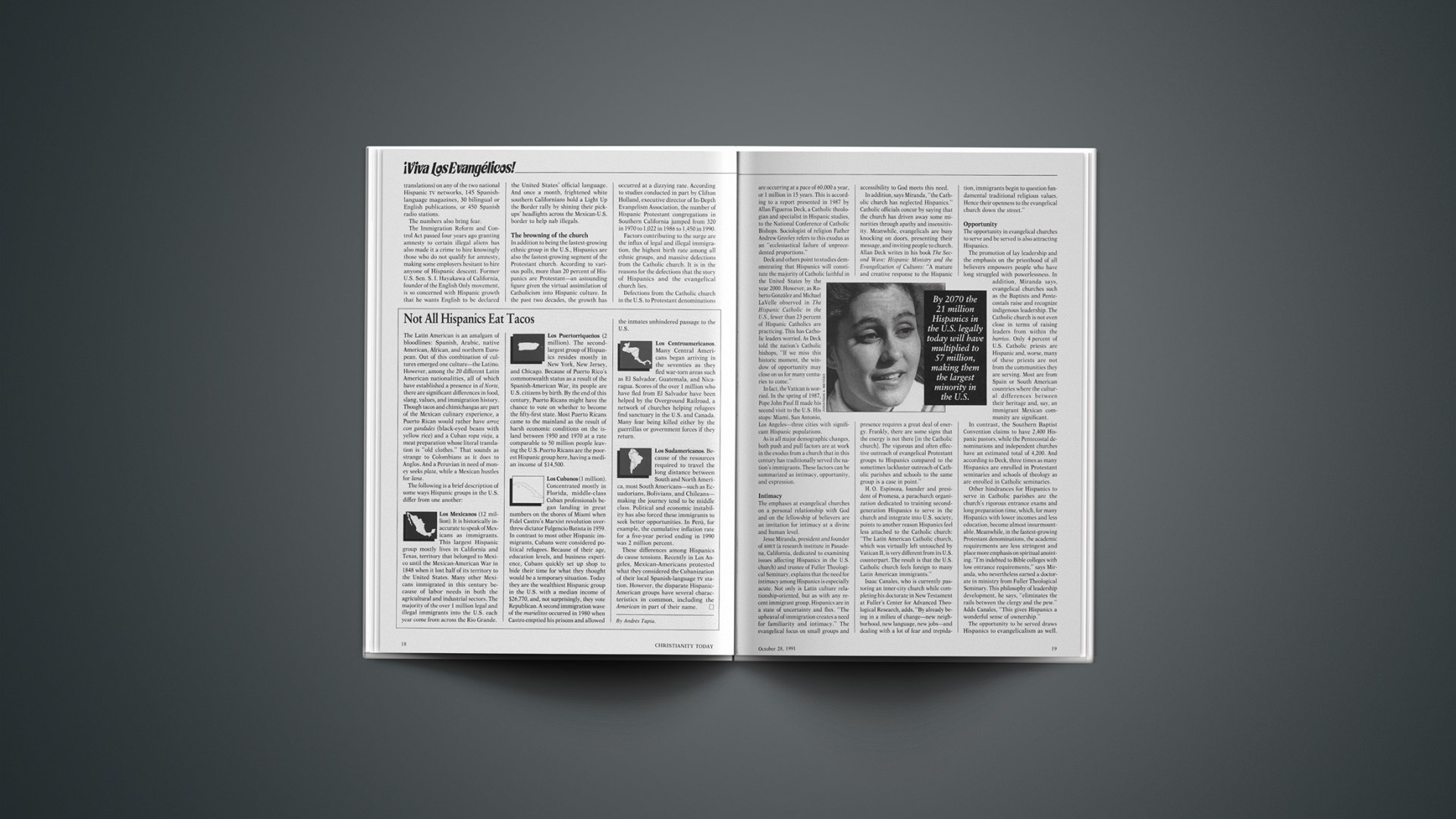The Latin American is an amalgam of bloodlines: Spanish, Arabic, native American, African, and northern European. Out of this combination of cultures emerged one culture—the Latino. However, among the 20 different Latin American nationalities, all of which have established a presence in el Norte, there are significant differences in food, slang, values, and immigration history. Though tacos and chimichangas are part of the Mexican culinary experience, a Puerto Rican would rather have arroz con gandules (black-eyed beans with yellow rice) and a Cuban ropa vieja, a meat preparation whose literal translation is “old clothes.” That sounds as strange to Colombians as it does to Anglos. And a Peruvian in need of money seeks plata, while a Mexican hustles for lana.
The following is a brief description of some ways Hispanic groups in the U.S. differ from one another;
Los Mexicanos (12 million). It is historically inaccurate to speak of Mexicans as immigrants. This largest Hispanic group mostly lives in California and Texas, territory that belonged to Mexico until the Mexican-American War in 1848 when it lost half of its territory to the United States. Many other Mexicans immigrated in this century because of labor needs in both the agricultural and industrial sectors. The majority of the over 1 million legal and illegal immigrants into the U.S. each year come from across the Rio Grande.
Los Puertorriqueños (2 million). The second-largest group of Hispanics resides mostly in New York, New Jersey, and Chicago. Because of Puerto Rico’s commonwealth status as a result of the Spanish-American War, its people are U.S. citizens by birth. By the end of this century, Puerto Ricans might have the chance to vote on whether to become the fifty-first state. Most Puerto Ricans came to the mainland as the result of harsh economic conditions on the island between 1950 and 1970 at a rate comparable to 50 million people leaving the U.S. Puerto Ricans are the poorest Hispanic group here, having a median income of $14,500.
Los Cubanosd (1 million). Concentrated mostly in Florida, middle-class Cuban professionals began landing in great numbers on the shores of Miami when Fidel Castro’s Marxist revolution overthrew dictator Fulgencio Batista in 1959. In contrast to most other Hispanic immigrants, Cubans were considered political refugees. Because of their age, education levels, and business experience, Cubans quickly set up shop to bide their time for what they thought would be a temporary situation. Today they are the wealthiest Hispanic group in the U.S. with a median income of $26,770, and, not surprisingly, they vote Republican. A second immigration wave of the marielitos occurred in 1980 when Castro emptied his prisons and allowed the inmates unhindered passage to the U.S.
Los Centroamericanos. Many Central Americans began arriving in the seventies as they fled war-torn areas such as El Salvador, Guatemala, and Nicaragua. Scores of the over 1 million who have fled from El Salvador have been helped by the Overground Railroad, a network of churches helping refugees find sanctuary in the U.S. and Canada. Many fear being killed either by the guerrillas or government forces if they return.
Los Sudamericanos. Because of the resources required to travel the long distance between South and North America, most South Americans—such as Ecuadorians, Bolivians, and Chileans—making the journey tend to be middle class. Political and economic instability has also forced these immigrants to seek better opportunities. In Perú, for example, the cumulative inflation rate for a five-year period ending in 1990 was 2 million percent.
These differences among Hispanics do cause tensions. Recently in Los Angeles, Mexican-Americans protested what they considered the Cubanization of their local Spanish-language TV station. However, the disparate Hispanic-American groups have several characteristics in common, including the American in part of their name.
By Andrés Tapia.








